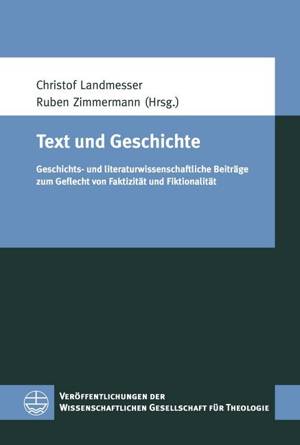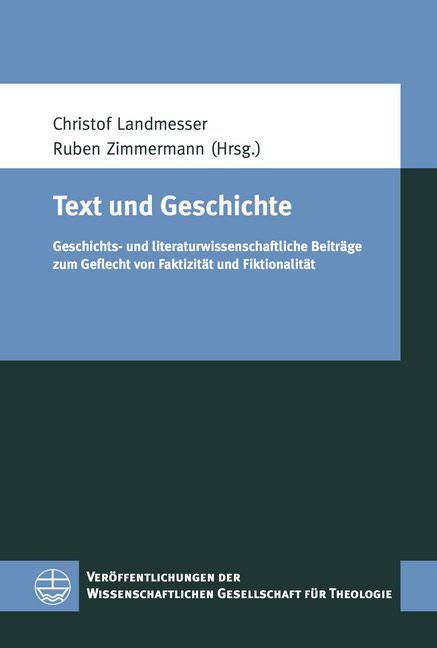
Je cadeautjes zeker op tijd in huis hebben voor de feestdagen? Kom langs in onze winkels en vind het perfecte geschenk!
- Afhalen na 1 uur in een winkel met voorraad
- Gratis thuislevering in België vanaf € 30
- Ruim aanbod met 7 miljoen producten
Je cadeautjes zeker op tijd in huis hebben voor de feestdagen? Kom langs in onze winkels en vind het perfecte geschenk!
- Afhalen na 1 uur in een winkel met voorraad
- Gratis thuislevering in België vanaf € 30
- Ruim aanbod met 7 miljoen producten
Zoeken
Text Und Geschichte
Geschichts- Und Literaturwissenschaftliche Beitrage Zum Geflecht Von Faktizitat Und Fiktionalitat
Paperback | Duits | Veröffentlichungen der Wissenschaftlichen Gesellschaft für Theologie (VWGTh) | nr. 46
€ 178,95
+ 357 punten
Uitvoering
Omschrijving
Text and history are inseparably interwoven. Their interconnectedness has to be considered multidimensionally: Neither do texts narrate the history as a mere factual report, nor does history leave source texts which enable an objective historical reconstruction. The only seemingly clear separation between historiography and fiction, introduced by Aristotle, must fail when confronted with the grey of the narratives of reality. Instead, text and history, fictionality and factuality, but also language and reality, form rather complex interrelationships. Important in this context are the content-related structuring of a text, its perspectivity and referentiality as well as the interpretive work of author and recipient. The contributions from the fields of historical sciences and literary studies by authors from different disciplines take into account this multidimensionality of the topic.
Specificaties
Betrokkenen
- Uitgeverij:
Inhoud
- Aantal bladzijden:
- 400
- Taal:
- Duits
- Reeks:
- Reeksnummer:
- nr. 46
Eigenschappen
- Productcode (EAN):
- 9783374047918
- Verschijningsdatum:
- 1/11/2017
- Uitvoering:
- Paperback
- Formaat:
- Trade paperback (VS)
- Afmetingen:
- 155 mm x 231 mm
- Gewicht:
- 421 g

Alleen bij Standaard Boekhandel
+ 357 punten op je klantenkaart van Standaard Boekhandel
Beoordelingen
We publiceren alleen reviews die voldoen aan de voorwaarden voor reviews. Bekijk onze voorwaarden voor reviews.








